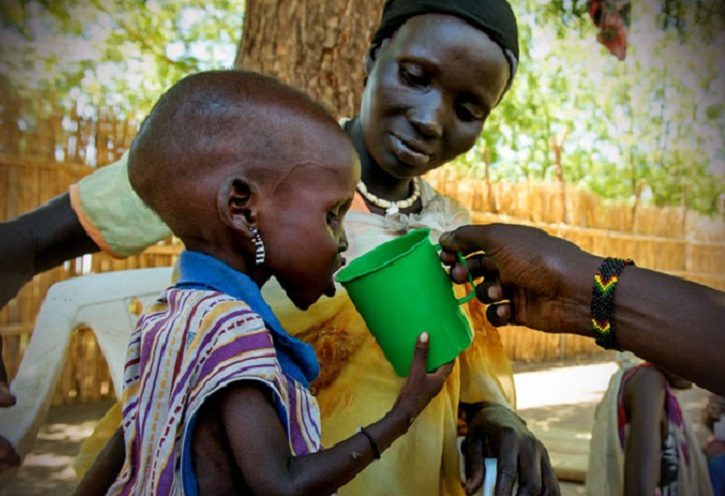Overview
3.9 million people – nearly one in every three people in South Sudan – were severely food insecure and 3.6 million were considered to be ‘stressed’, in September 2015. An estimated 30,000 people were facing catastrophic food insecurity (IPC Level 5) in Unity State, leading to starvation, death, and destitution. (OCHA, 5 Jan 2016)
At the height of the lean season in July 2016, some 4.8 million people – more than one in every three people in South Sudan – were estimated to be severely food insecure. This number is expected to rise as high as five million in 2017. The food security situation is at the most compromised level since the crisis commenced in 2013 – the combination of conflict, economic crisis and lack of adequate levels of agricultural production have eroded vulnerable households ability to cope. More than one million children under age 5 are estimated to be acutely malnourished, including more than 273,600 who are severely malnourished. (OCHA, 13 Feb 2017)
As of January 2017, 3.8 million were estimated in Crisis (IPC Phase 3), Emergency (IPC Phase 4) and Catastrophe (IPC Phase 5). As of February-April 2017, the number of people estimated in need of humanitarian assistance (IPC phase 3 and above) has increased to almost 5 million, out of which 100,000 are facing famine conditions…Famine is declared in Leer and Mayendit counties of Greater Unity State. Famine is likely to happen in Koch County and can be avoided in Panyijiar County only if the humanitarian assistance is delivered as planned. (IPC, 20 Feb 2017)
An estimated 6.01 million (50% of the population) people are expected to be severely food insecure in June-July 2017, compared to 5.5 million (45% of the population) people in May 2017. This is the greatest number of people ever to experience severe food insecurity (IPC Phases 3, 4 and 5) in South Sudan. Famine is no longer occurring in Leer and Mayendit counties, and further deterioration was prevented in Koch and Panyijiar counties of former Southern Unity State as a result of immediate and sustained multi-sector humanitarian assistance delivered to the affected population since March 2017…However, in June-July 2017, approximately 45,000 people will still be facing Humanitarian Catastrophe in Leer, Koch, Mayendit in former Unity State and Ayod County in former Jonglei state based on most likely assumptions of continued armed conflict, food shortages associated with seasonality, and humanitarian assistance delivery constraints…Of great concern is former Greater Jonglei State, where food security is rapidly deteriorating, predominantly in the counties of Ayod, Canal/Pigi, Duk, Nyirol and Uror, which are facing Emergency (IPC Phase 4) acute food insecurity, with Ayod having an estimated 20,000 people experiencing Humanitarian Catastrophe (IPC Phase 5) at least through July 2017. (IPC, 31 May 2017)
In September 2017, 6 million people were in Crisis (IPC Phase 3), Emergency (IPC Phase 4) and Catastrophe (IPC Phase 5), which corresponded to 56% of the total population. As for October to December 2017, the number of people in need of humanitarian assistance (IPC phase 3 and above) are expected to drop to 4.8 million (45% of the total population. However, this figure includes a doubled number of people classified in Emergency (IPC Phase 4) compared to the same time last year, and 25,000 people still experiencing catastrophic conditions and extreme food gaps. (IPC, 6 Nov 2017)
WFP resumed the integrated rapid response mechanism (IRRM) and currently has seven teams deployed in Bilkey, Nyandit, Kurwai, Jaibor, Chuil, Buot and Ulang, providing life-saving food and nutrition assistance to around 96,633 people, including 17,370 children under the age of five. WFP plans to deploy an additional 26 missions in the coming six weeks, targeting close to 400,000. (WFP, 8 Jan 2018)
Source: Reliefweb 2018

